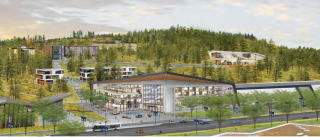
If medicine has teaching hospitals, why does engineering not have learning factories — where production, research and education come together seamlessly? Building on the success of introducing simulation to composites manufacturing to reduce risk, cost and time, UBC is developing — in conjunction with the Composites Research Network and its industrial partners — an exciting new initiative to reimagine composites manufacturing for the 21st century, bringing together simulation, sensors and data analytics, and automation.
The physical factory will have a core capability which is the current, qualified production baseline. The factory will be immensely data rich, with multiple layers of sensors and data analysis. It will be sized to allow for both standard production and research production. It will be highly reconfigurable and multi-layered in its ability to allow different sensor and data analysis technologies to be implemented and researched. There will be a digital twin in the cloud, where a virtual factory based on simulation will be used, in combination with the rich data from the physical factory, to understand, manage and improve advanced composites manufacturing processes.
The factory will be physically designed to be a mixeduse facility, satisfying both academic and industrial requirements. It will be part of the UBC Okanagan campus, a key tenant of the new Innovation Precinct and will be conducive for interaction and collaboration. Equal attention is being paid to the virtual factory, which will be hosted at the UBC Vancouver campus, where the combination of big sensor and data capacity from the physical factory will be combined with simulation to understand, control and optimize the production of advanced aerospace composites structures.
For further information visit ubcinnovationprecinct.ca and crn.ubc.ca.
